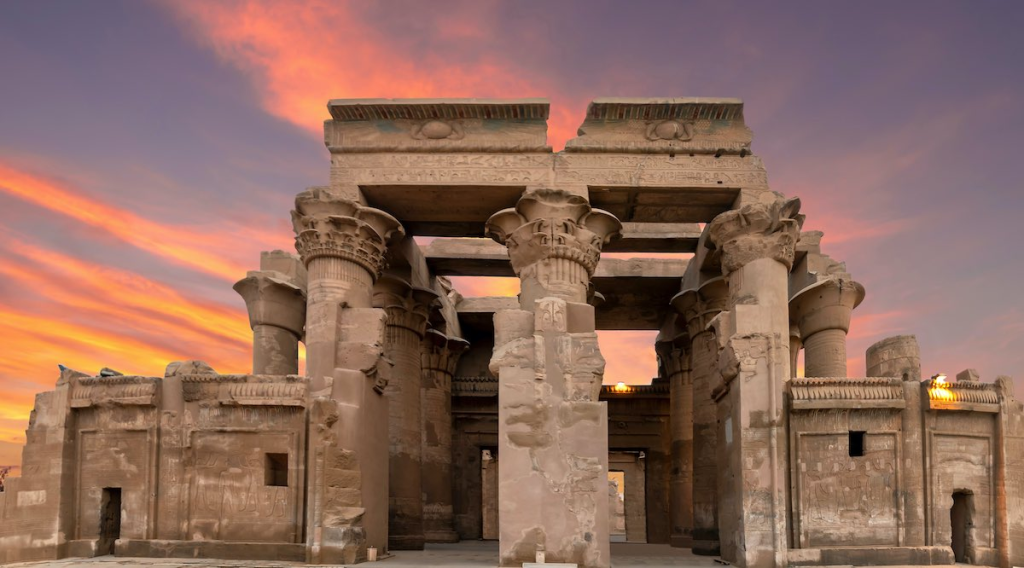
Welcome to our authoritative blog post dedicated to shedding light on the magnificent Kom Ombo Temple. Situated along the banks of the Nile River in Upper Egypt, this extraordinary temple complex stands out among its counterparts for its distinctive architectural design and dual sanctuaries. Join us as we delve into the intriguing history, remarkable features, and cultural significance of the Kom Ombo Temple.
- Unveiling the Historical Context:
The Kom Ombo Temple, believed to have been constructed during the Ptolemaic dynasty (circa 237 to 57 BCE), occupies a site with a history dating back even further. It was built on the remains of an older temple dating back to the New Kingdom of ancient Egypt. Dedicated to two Egyptian deities, Sobek (the crocodile god) and Horus (the falcon-headed god), the temple served as a significant religious center and pilgrimage site.
- Unique Architectural Marvel:
What sets the Kom Ombo Temple apart from other ancient Egyptian temples is its symmetrical layout, featuring twin sanctuaries, courts, and colonnades. The temple was designed with precision, dividing its sacred spaces between two identical sections, each dedicated to a different deity.
Visitors entering the temple are greeted by a monumental entrance gate leading to a double colonnade corridor adorned with fascinating hieroglyphs and intricate reliefs. The dual sanctuaries, one dedicated to Sobek and the other to Horus, feature statues and altars dedicated to the respective gods.
- Sobek and Horus: The Divine Connection:
The duality of the Kom Ombo Temple reflects the mythological connection between Sobek and Horus. Sobek, revered as the crocodile god, symbolized fertility, protection, and the power of the Nile. Horus, on the other hand, represented the sky, kingship, and divine protection.
The temple’s reliefs and inscriptions narrate the ongoing battle between the two deities, showcasing the eternal struggle between order and chaos, light and darkness. Visitors can witness captivating scenes depicting the healing and protective powers of Sobek and the mighty triumphs of Horus.
- The Museum of Crocodiles:
One of the notable features of the Kom Ombo Temple is the adjacent Crocodile Museum, which houses a collection of mummified crocodiles discovered in the vicinity of the temple. Crocodiles were considered sacred animals associated with Sobek, and they were mummified as offerings to the deity. The museum provides insights into the ancient Egyptians’ reverence for animals and their intricate religious beliefs.
- The Modern Visitor Experience:
Today, the Kom Ombo Temple stands as a living testament to the rich history and religious practices of ancient Egypt. Visitors can explore the temple’s courtyards, halls, and sanctuaries, marveling at the well-preserved reliefs and architectural details that have survived the test of time.
Stepping into the Kom Ombo Temple allows visitors to immerse themselves in the ancient Egyptian worldview and gain a deeper appreciation for the cultural and religious significance of this unique dual sanctuary. The temple serves as a reminder of the extraordinary civilization that once thrived along the Nile River.

